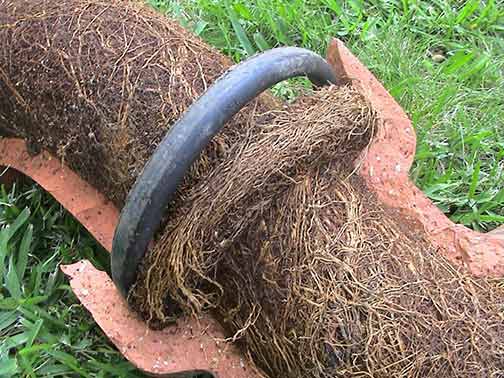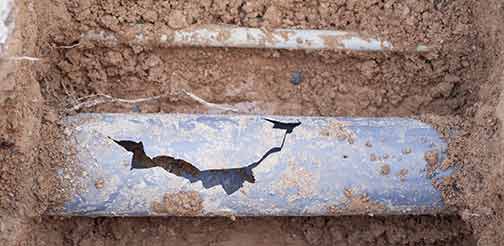
The sewer system is an essential part of any urban center or city, serving its people by disposing of waste and keeping the surroundings safe and healthy. Chicago, a bustling city in the United States, has a complex sewer network that helps keep the city moving. However, this network can also experience problems that endanger public health and the environment. Here we will explore the six common types of sewer line problems in Chicago that residents and businesses face, their causes, and recommended solutions.
Tree Roots
One of the most common sewer line problems in Chicago is the intrusion of tree roots. Trees can grow deep into the ground, sometimes penetrating sewer lines in their quest for water and nutrients. Once inside the sewer line, continuous growth and movement can cause significant damage. Over time, roots can form a blockage, leading to clogs that force wastewater back up into homes and businesses. The underground nature of sewer lines can make it challenging to detect root intrusion, although some clues include gurgling sounds from the toilet, slow drains, or foul smells.
To address this problem, Chicago residents should consider calling a professional plumber to examine areas of the property around the sewer line, look for signs of tree roots, and have your sewer line camera inspected for damage. Depending on the extent of damage, a plumber may recommend root removal, the installation of a barrier to deter growth or replacement of damaged pipes.
Clogs and Blockages
Clogs and blockages, whether caused by tree roots, grease, debris, or other material, are another common sewer line problem in Chicago. Clogs can cause backups, resulting in wastewater backing up into households and, in severe cases, causing catastrophic damage.
In many cases, clogs can be avoided by taking preventative measures. For example, regularly cleaning the drains helps prevent build-up and blockages. Avoid flushing items that do not break down quickly, such as cotton swabs, wipes, and sanitary pads. Cooking grease, fats, and oils should also be disposed of in the trash can and not down the drain.
When a clog or blockage occurs, a plumber should be called immediately. They will be able to locate the source of the blockage using specialized tools and equipment and remove it, restoring proper flow to the sewer system. By way of a hydro jetting service, plumbers can have you back up and running in no time.

Cracks and corrosion can occur due to physical stress, such as a heavy vehicle’s impact, soil movements, or shifting foundations.
Cracks and Corrosion
Sewer lines are underground and exposed to various environmental factors, such as soil, moisture, chemicals, and temperature fluctuations. As a result, they are vulnerable to cracks and corrosion.
Cracks and corrosion can occur due to physical stress, such as a heavy vehicle’s impact, soil movements, or shifting foundations. Corrosion can result from the buildup of acids in the sewer system or chemical reactions caused by wastewater and the sewer line materials. Over time, cracks and corrosion can lead to sewer line failure, creating an environmental and health hazard.
Addressing cracked or corroded sewer lines requires a team of professionals trained to locate the source of the problem and repair or replace damaged sewer lines. In some cases, trenchless methods may be used to repair the sewer line, reducing the impact on the surrounding environment and infrastructure.
Sagging or Collapsing Pipes
Sewer line pipes are generally made of plastic, cast iron, or concrete and are prone to sagging or collapsing. Sagging pipes occur when the ground under the sewer line softens or shifts, creating a dip in the pipe. Collapsed pipes, on the other hand, occur when the pipe is exposed to external pressure, such as heavy vehicles, soil weight, or changes in soil moisture.
Sagging or collapsing pipes can prevent wastewater from flowing correctly, leading to backups and environmental hazards. Fixing sagging or collapsing pipes requires digging out the affected pipe section and replacing it with a new one. This process can be invasive and costly, requiring extensive excavation, re-landscaping, and possibly street closures.
Bellied or Misaligned Pipes
Bellied or misaligned pipes occur when a section of the sewer line sinks or shifts from its intended slope or alignment. This can cause wastewater to pool in the affected area, creating a potential blockage, and a breeding ground for bacteria and other health hazards.
Bellied or misaligned pipes can be challenging to detect as they are often invisible from above ground. However, some clues that alert homeowners and businesses include foul odors, slow drains, backed-up wastewater, and wet spots in the lawn.
Fixing these sewer line problems requires excavation, identifying the affected area, assessing the extent of damage, and correcting the alignment. Depending on the level of damage, a partial or complete replacement may be required.
Off-Grade Pipes
Off-grade pipes are those that are not installed according to the manufacturer’s specifications or the plumbing code. These pipes can result in backup and leaks, reducing the sewer line’s overall capacity.
Determining whether an off-grade pipe is present requires a professional plumber to investigate the sewer line’s condition. If an off-grade pipe is detected, it must be replaced with a new one to ensure adequate sewer system function.
The sewer line system is a crucial aspect of public health and safety in Chicago. The six common types of sewer line problems can cause significant issues, which require prompt professional attention. Although some preventive measures, such as avoiding flushing of non-degradable materials and regular drain cleaning services, can help reduce the chance of sewer line problems occurring, it is essential to seek professional help when problems arise. Through adequate maintenance, sewer camera inspections, and timely repair or replacement, Chicago residents can ensure a safe and functioning sewer line system.